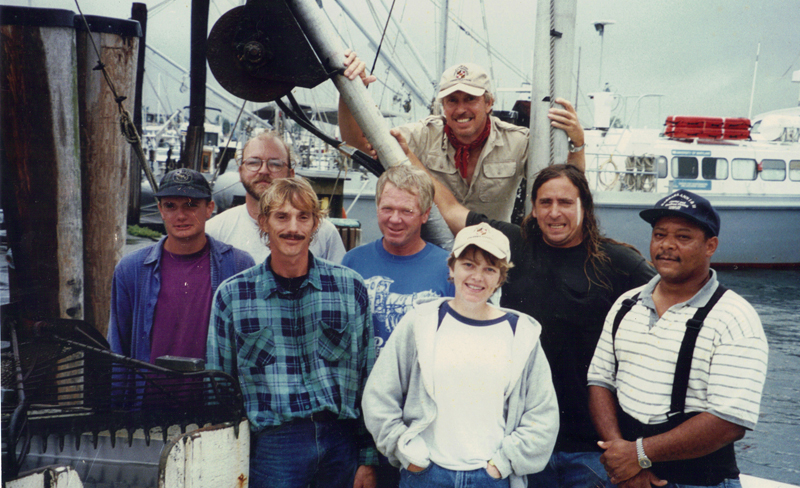
End of an Era: The last day of Oyster Disease Research funded survey work, 22 September 1995, marked the conclusion of a six year patent-tong based oyster stock assessment program in Maryland. Photo taken in Solomons, MD. Front Row (L to R): C. Rice, E. Ramsey, L.A. Baylis, E.L. Williams, Second Row: R Bussell, J. Collier (Capt.), M.L. Homer (P.I.), Rear: M.L. Tarnowski
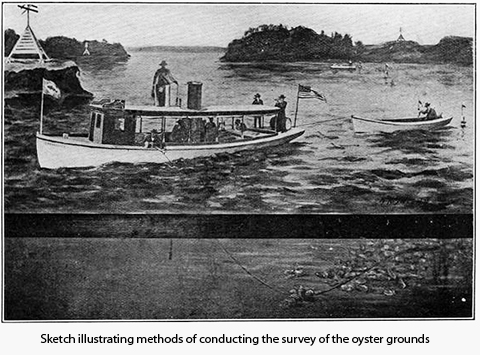 The basic objective of a shellfish population survey is to provide information for the conservation and enhancement of these valuable natural resources. The need for obtaining this information has been driven by economic and ecological considerations, stemming from the importance of shellfish in commerce and in nature. In Maryland, the approximately 200,000 acres of natural oyster bars belong to the public domain. Because stewardship of these oyster grounds is the responsibility of the state, these surveys are inevitably undertaken with government sponsorship.
The basic objective of a shellfish population survey is to provide information for the conservation and enhancement of these valuable natural resources. The need for obtaining this information has been driven by economic and ecological considerations, stemming from the importance of shellfish in commerce and in nature. In Maryland, the approximately 200,000 acres of natural oyster bars belong to the public domain. Because stewardship of these oyster grounds is the responsibility of the state, these surveys are inevitably undertaken with government sponsorship.
The monitoring and survey of Maryland's Chesapeake Bay shellfish resources has a long and
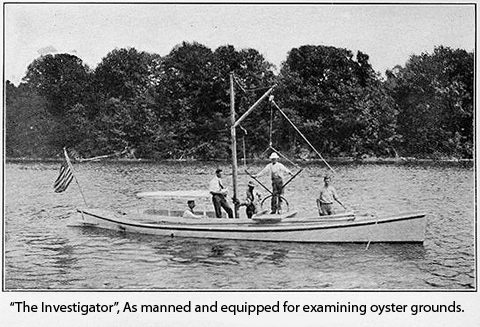 varied history dating back to the 19th century. The Maryland Department of Natural Resources Shellfish Monitoring and Assessment Program is responsible for evaluating the state's shellfish resources to support management and policy decision making. The Program provides scientific and technical information, expertise, and advice concerning the populations of several commercially important molluscan shellfish species both in the Chesapeake Bay and the Coastal Bays of Maryland. In addition, the Program conducts and reports on relevant shellfish research projects and environmental reviews, and has been involved in numerous collaborative research efforts both within and outside of the Maryland Department of Natural Resources. Many of these projects were funded through outside competitive grants, bringing additional monetary awards into the state.
varied history dating back to the 19th century. The Maryland Department of Natural Resources Shellfish Monitoring and Assessment Program is responsible for evaluating the state's shellfish resources to support management and policy decision making. The Program provides scientific and technical information, expertise, and advice concerning the populations of several commercially important molluscan shellfish species both in the Chesapeake Bay and the Coastal Bays of Maryland. In addition, the Program conducts and reports on relevant shellfish research projects and environmental reviews, and has been involved in numerous collaborative research efforts both within and outside of the Maryland Department of Natural Resources. Many of these projects were funded through outside competitive grants, bringing additional monetary awards into the state.
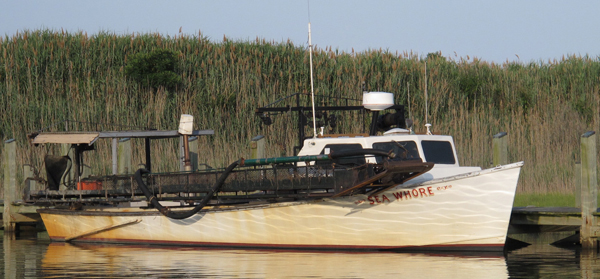 The present Maryland Department of Natural Resources Shellfish Monitoring and Assessment Program was established in 1990 with several specific objectives, including a commitment to bolstering the Annual Fall Oyster Survey without compromising the integrity of the long-term database; the development of an oyster stock assessment methodology; expansion of shellfish resource monitoring, survey, research, and restoration efforts into the Coastal Bays; and implementing stock assessment projects investigating the status of Maryland's commercially valuable clam resources (the hard clam, Mercenaria mercenaria; the softshell clam, Mya arenaria; and the stout razor clam, Tagelus plebeius).
The present Maryland Department of Natural Resources Shellfish Monitoring and Assessment Program was established in 1990 with several specific objectives, including a commitment to bolstering the Annual Fall Oyster Survey without compromising the integrity of the long-term database; the development of an oyster stock assessment methodology; expansion of shellfish resource monitoring, survey, research, and restoration efforts into the Coastal Bays; and implementing stock assessment projects investigating the status of Maryland's commercially valuable clam resources (the hard clam, Mercenaria mercenaria; the softshell clam, Mya arenaria; and the stout razor clam, Tagelus plebeius).
Targeted Shellfish Species
Eastern Oyster,
Crassostrea virginica
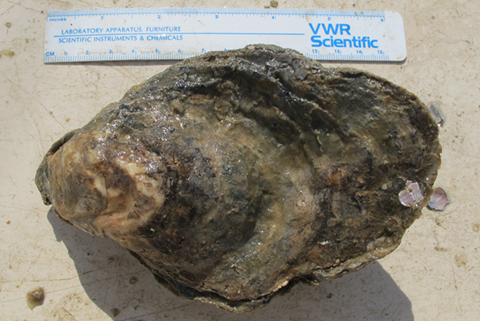 The immediate goal in 1990 was to develop sampling and analytical techniques and procedures that produced quality data and results specific to a need. In 1990, collaboration between the Shellfish Monitoring Program and the Cooperative Oxford Laboratory resulted in the "Modified Fall Survey" which delineated a subset of 43 oyster bars for the purpose of having a consistent oyster disease database. Also in 1990, a nonparametric statistical framework was applied to Annual Fall Survey data sets, from 1985 to the present using Key Bar spatfall intensity data, and from 1990 forward regarding disease status and total observed mortality data. Between 1990 and 1996, substantial effort went into the design and testing of a patent tong-based sampling technique, emphasizing accuracy, while producing sufficient data to address the issue of sample precision. Other sampling techniques were developed and applied to tracking hatchery-reared spat, intertidal oyster population monitoring (coastal bays), and developing a rapid and inexpensive method of estimating fishing mortality.
The immediate goal in 1990 was to develop sampling and analytical techniques and procedures that produced quality data and results specific to a need. In 1990, collaboration between the Shellfish Monitoring Program and the Cooperative Oxford Laboratory resulted in the "Modified Fall Survey" which delineated a subset of 43 oyster bars for the purpose of having a consistent oyster disease database. Also in 1990, a nonparametric statistical framework was applied to Annual Fall Survey data sets, from 1985 to the present using Key Bar spatfall intensity data, and from 1990 forward regarding disease status and total observed mortality data. Between 1990 and 1996, substantial effort went into the design and testing of a patent tong-based sampling technique, emphasizing accuracy, while producing sufficient data to address the issue of sample precision. Other sampling techniques were developed and applied to tracking hatchery-reared spat, intertidal oyster population monitoring (coastal bays), and developing a rapid and inexpensive method of estimating fishing mortality.
Sampling techniques since 1990 have been applied to a variety of projects, including monitoring artificial reefs, evaluating freshet effects, surveying oyster sanctuaries, assessing hatchery-produced spat on shell and cultchless oyster plantings, evaluating bagless dredging and other types of habitat manipulation, and numerous other projects.
Hard Clams,
Mercenaria merceneria
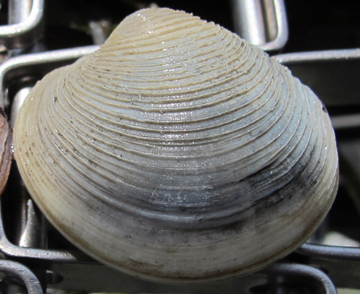 In 1993, a hard clam population assessment was initiated in Maryland's coastal bays, using a hydraulic escalator dredge-based sampling scheme. This project has continued on an annual basis (with the exception of one year) through the present. Data from this project was crucial in the development of a Fishery Management Plan for this species in the coastal bays.
In 1993, a hard clam population assessment was initiated in Maryland's coastal bays, using a hydraulic escalator dredge-based sampling scheme. This project has continued on an annual basis (with the exception of one year) through the present. Data from this project was crucial in the development of a Fishery Management Plan for this species in the coastal bays.
In 1995 and 1996, patent tong-based surveys were conducted in Tangier Sound in order to characterize hard clam populations in that region.
Softshell Clams,
Mya arenaria and Stout Razor Clams,
Tagelus plebeius
 In 2000, pilot studies were conducted in several areas of the Chesapeake Bay with the objective of designing a stock assessment project that could track and evaluate populations of softshell and stout razor clams in Maryland's portion of the Chesapeake Bay. A key element of this project was the systematic tracking of a variety of diseases and conditions afflicting both of these clam species. The project formerly began in 2001 and recently culminated in a final report submitted to the funding agency (NOAA). Data from this project helped to craft a recent Fishery Management Plan (currently under review).
In 2000, pilot studies were conducted in several areas of the Chesapeake Bay with the objective of designing a stock assessment project that could track and evaluate populations of softshell and stout razor clams in Maryland's portion of the Chesapeake Bay. A key element of this project was the systematic tracking of a variety of diseases and conditions afflicting both of these clam species. The project formerly began in 2001 and recently culminated in a final report submitted to the funding agency (NOAA). Data from this project helped to craft a recent Fishery Management Plan (currently under review).
Bay Scallops,
Argopecten irradians
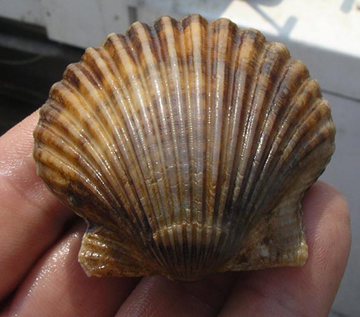 As seagrasses expanded their coastal bay range in the 1990's, a project to attempt to restore Bay scallop populations in Chincoteague Bay was designed in 1996 and implemented in 1997 and 1998. Over 1.2 million seed scallops were placed in large predator-exclusion pens and growth, mortality, and reproductive condition were tracked. Monitoring of planted scallops was afforded by using a suction dredge and offspring were sampled using spatkin bags and hydraulic escalator dredge tow collections. The latter continued on an annual basis until 2010.
As seagrasses expanded their coastal bay range in the 1990's, a project to attempt to restore Bay scallop populations in Chincoteague Bay was designed in 1996 and implemented in 1997 and 1998. Over 1.2 million seed scallops were placed in large predator-exclusion pens and growth, mortality, and reproductive condition were tracked. Monitoring of planted scallops was afforded by using a suction dredge and offspring were sampled using spatkin bags and hydraulic escalator dredge tow collections. The latter continued on an annual basis until 2010.
Other Shellfish Related Projects
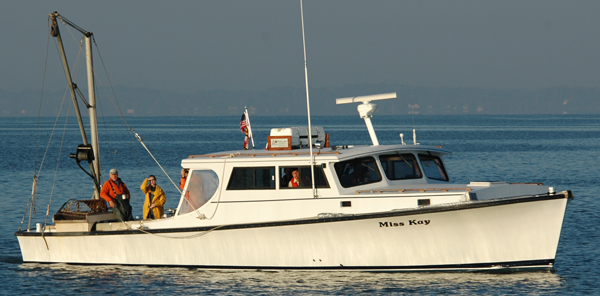
Molluscan inventory in Maryland's coastal bays
In addition to the hydraulic escalator dredge sampling, molluscan populations in the coastal bays were inventoried for several years via quadrat-based surveys and ponar grab acquired collections. Subtidal oyster population disease status has been monitored for well over a decade through collaboration with the Cooperative Oxford Laboratory.
Artificial oyster reef monitoring
Starting in 1990, and continuing through 2001, 10 artificial oyster reefs, all constructed using either dredged or fresh shells, were patent tong or diver surveyed in Maryland's Chesapeake Bay. The most intensive sampling period was in 1997 and 1998.
Habitat manipulation studies
Several studies have been conducted, primarily between 1994 and 2004, focusing on the effects of oyster habitat manipulation using a variety of techniques including bagless dredging, a modified tiller, and hydraulic escalator dredges on recruitment and survivorship of cultchless spat.
Sanctuary assessment surveys
Maryland has had several oyster bar sanctuary programs and monitoring of these areas has continued on and off since 1990. The most recently established sanctuaries have been surveyed for several years with a large-scale monitoring project scheduled for 2011 and 2012.
Freshet monitoring
In 1993, sampling procedures and data acquisition protocols were established for assessing the effects of major freshet events on oyster populations. These were employed during the significant freshet occurrences in 1993, 1994, 1996, and 2011.
Power dredge zone monitoring
In response to legislation, several power dredge zones were the subject of historical data analyses and field surveys focusing on the effects of power dredging on spatfall intensity. The Annual Fall Survey provided historical information and field collections began in 2007.